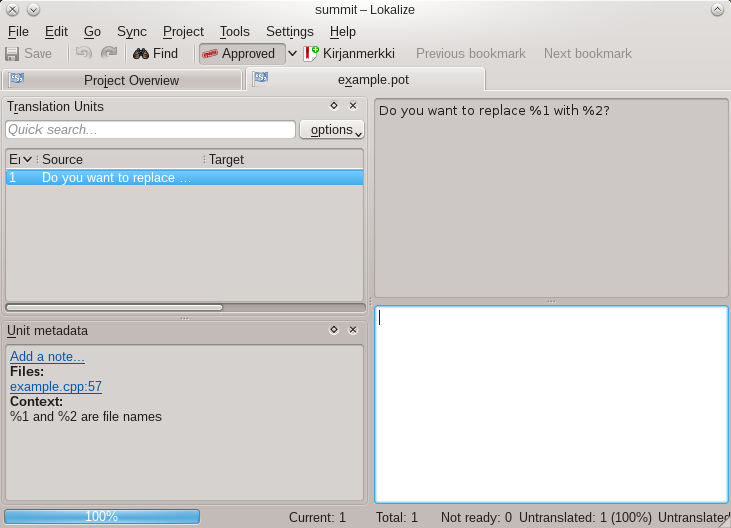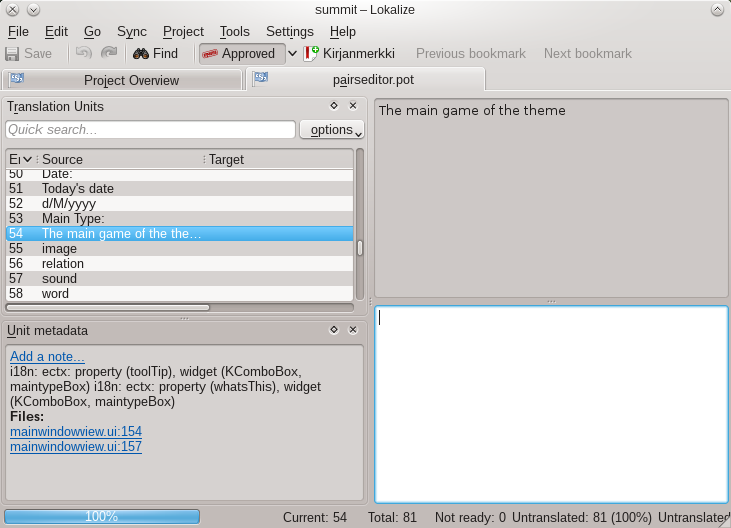Development/Tutorials/Localization/Message Appearance
Abstract
This page is a short summary that tries to show how translators see the translatable messages. This is intended primarily for developers who want to see what kind of context information can be seen in the translation files and how not everything that can be seen by reading the source code is visible to translators. The information that translators see about a given message also depends on where the message comes from.
For more information one can always look at the generated template (pot) files, either by opening them in any text editor or with Lokalize. In KDE infrastructure they are in SVN under branches/stable/l10n-kde4/templates and trunk/l10n-kde4/templates.
(The idea is that I'll move this page to somewhere once it's at least somewhat useful.)
Messages coming from i18n() and friends
For these messages translators will only see the following:
- the source string (and plural form if i18np is used)
- the context parameter if i18nc is used
- the code comment beginning with "i18n:" if used
- list of file names and row numbers the messages appears in
- the order in which the messages were extracted (sometimes useful, but not a replacement for other context information)
If the message appears in many places, the context information from all the places is shown.
For example this message:
QString msg = i18nc("%1 and %2 are file names", "Do you want to replace %1 with %2?",
oldFile, newFile)
Appears like this in Lokalize:
Messages in UI files
For these messages translators will see everything that they see for messages coming from i18n() and friends. They will additionally see the following:
- the type and name of the widget the message it appears in
- the name of the property the message is a value for
Examples:
For example from "property (displayFormat), widget (QDateEdit, dateEdit)" it could be inferred that the translatin should use the specific format that QDate's toString() accepts. Some translators cannot infer this, though, so it is good to additionally use "(qtdt-format)" as context as said on page Development/Tutorials/Localization/i18n.
Messages in .kcfg files
All the things mentioned in the first section also apply here. Additionally the following context information is automatically added:
- the tag the string is for
- the name of the entry the tag is for
- the name of the group the entry belongs to
Example:




